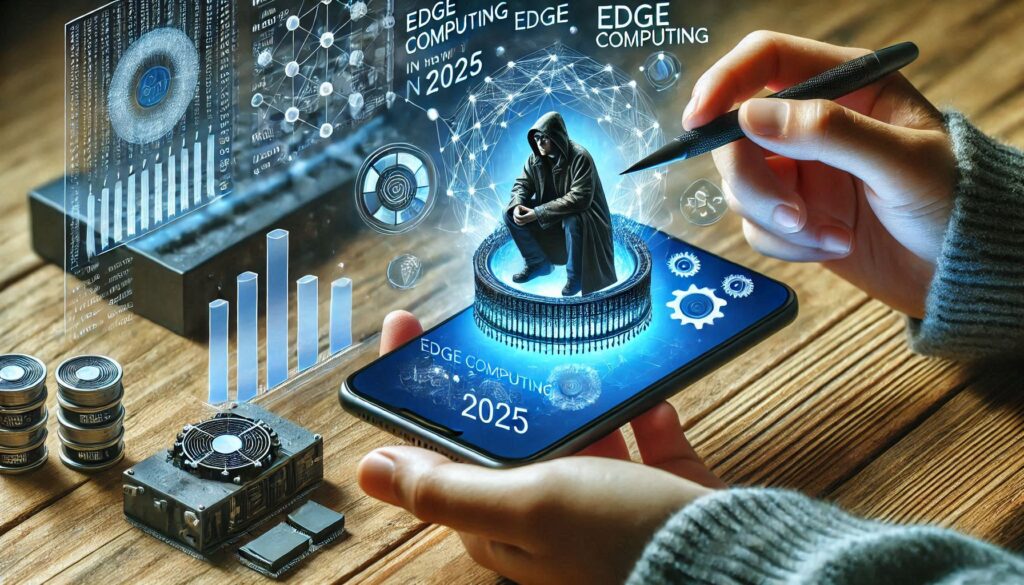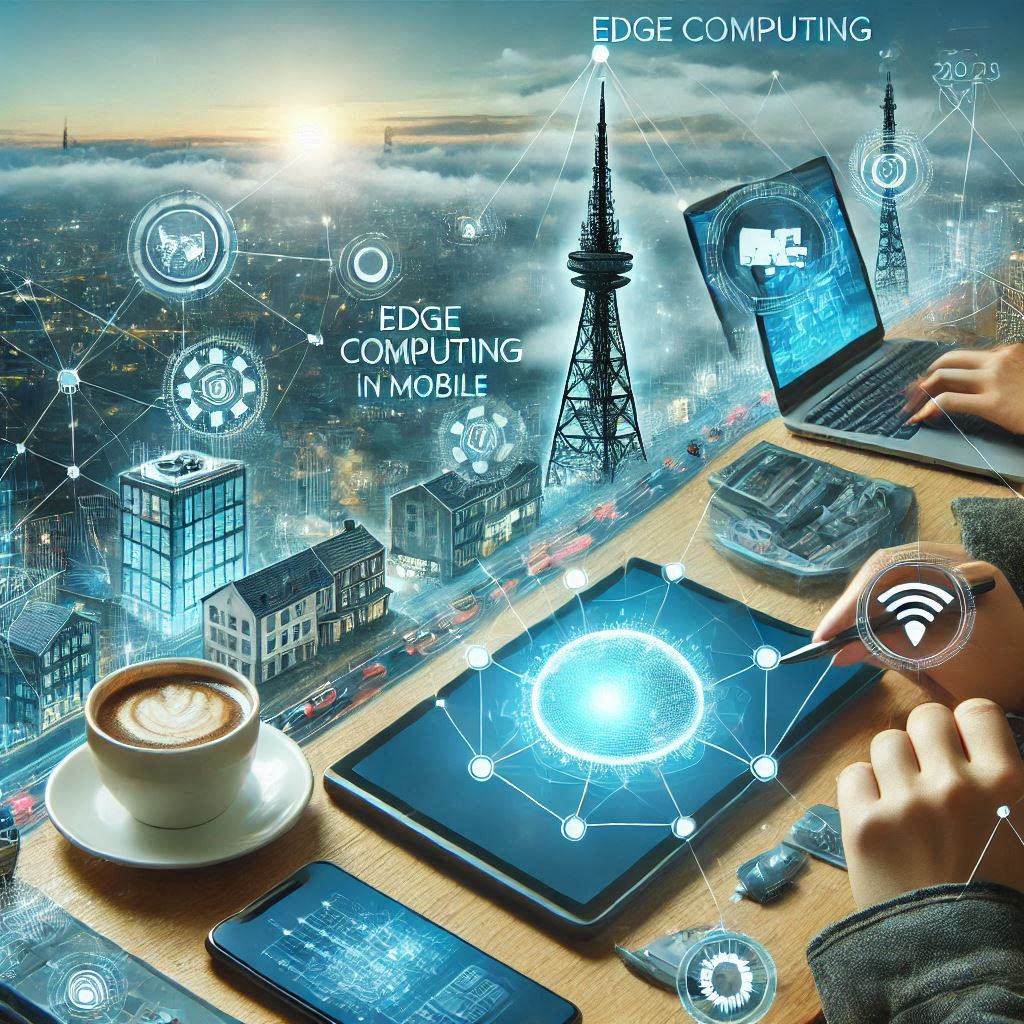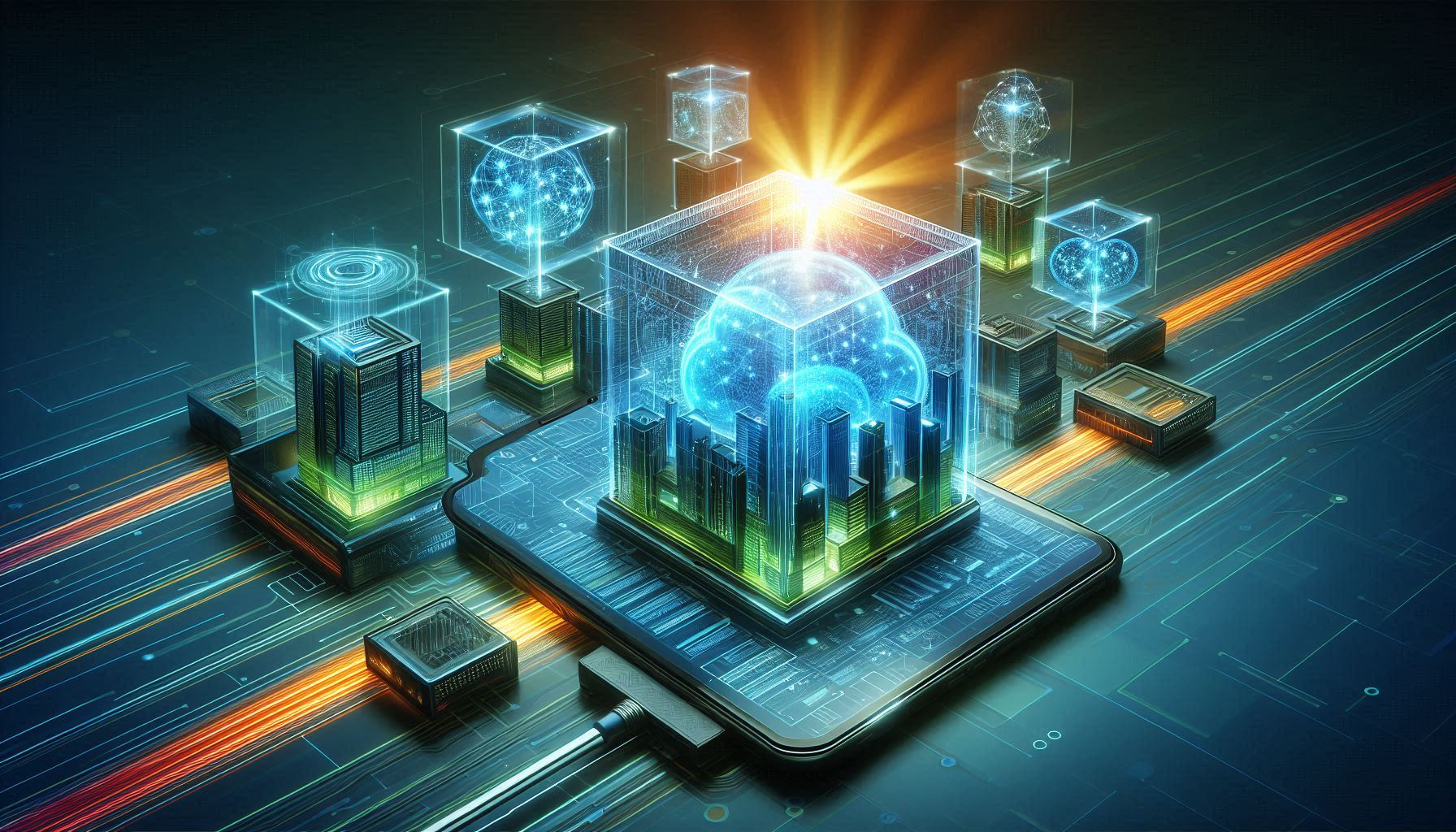Edge Computing in Mobile Devices: How It’s Transforming Real-Time Processing in 2025 – Best 2025

Edge Computing in Mobile Devices: How It’s Transforming Real-Time Processing in 2025
Introduction
Edge Computing in Mobile Devices: How It’s Transforming Real-Time Processing in 2025:The rapid evolution of mobile technology trends in 2025 continues to reshape our digital landscape. Edge computing in mobile devices is emerging as a game-changer for real-time processing with edge computing. By bringing computation and data storage closer to the source—the edge of the network—edge computing significantly reduces latency and enhances the performance of mobile applications. This technological leap is not only driving innovation in diverse industries but also redefining how we interact with our devices. From healthcare, gaming, and AR/VR, to IoT edge devices for smart home automation, the possibilities are vast.
This article explores what is edge computing in mobile devices, how it enhances real-time processing, and its role in enabling low-latency edge devices. We’ll delve into mobile technology trends in 2025, low-latency gaming with edge technology, and the future of mobile cloud processing.
What is Edge Computing?
Edge computing is a distributed computing paradigm that processes data closer to the data source rather than relying solely on centralized cloud computing servers. In traditional mobile cloud processing, data must travel from a user’s device to a distant data center for processing and then back again. This round trip can introduce latency, especially for real-time mobile apps.
Edge computing minimizes this delay by handling data processing at or near the edge of the network, such as on mobile devices, edge servers, or local gateways. This shift allows for faster decision-making, improved reliability, and reduced bandwidth usage. It’s no wonder that edge computing in mobile devices is one of the most discussed mobile technology trends in 2025.
Key Characteristics of Edge Computing:
- Proximity to the Source: Data is processed closer to where it is generated.
- Low Latency: Faster response times enable real-time applications.
- Improved Efficiency: Reduces the burden on centralized cloud computing resources.
- Enhanced Privacy: Local data processing limits the need to transmit sensitive information to the cloud.
Why Edge Computing Matters for Mobile Devices – Edge Computing in Mobile Devices
Mobile devices are at the forefront of the edge computing revolution. With billions of smartphones, tablets, and IoT devices in use, the demand for low-latency, high-performance mobile applications has never been greater. Edge computing in mobile devices addresses these demands by:
1. Reducing Latency
Applications like real-time gaming, video streaming, and AR/VR rely on instant feedback. Even milliseconds of delay can disrupt user experiences. By processing data locally, edge computing ensures seamless interactions. This is why low-latency gaming with edge technology has become a reality in 2025.
2. Enhancing Application Performance – Edge Computing in Mobile Devices
Processing data closer to the user offloads work from mobile devices to nearby edge servers, optimizing resources and enabling smoother performance for computationally intensive tasks. It highlights the benefits of edge computing in 2025.
3. Supporting Real-Time Analytics – Edge Computing in Mobile Devices
Edge computing enables mobile devices to analyze and act on data in real time. This capability is critical for applications in healthcare, top edge computing use cases in healthcare and gaming, autonomous vehicles, and smart cities.
4. Enabling Offline Functionality
In areas with limited or intermittent connectivity, edge computing allows mobile devices to function independently by processing and storing data locally. This ensures how edge computing reduces latency in real-time apps even in low-connectivity scenarios.
Key Applications of Edge Computing in 2025
1. Healthcare
Healthcare technology trends in 2025 are transforming patient care, with edge computing in wearable health devices playing a pivotal role. Examples include:
- AI-powered diagnostics with edge computing: Mobile devices equipped with AI can analyze medical images or patient data locally, reducing diagnosis times.
- Telemedicine with edge computing: Low-latency edge computing ensures high-quality video consultations and real-time sharing of diagnostic data.
- Wearable health devices: Devices like smartwatches and fitness trackers process health data locally and alert users to anomalies without relying on centralized servers.
2. Gaming
The gaming industry has embraced edge computing to deliver:
- Low-latency gaming with edge technology: This ensures seamless gameplay and faster response times.
- Edge computing in cloud gaming: Brings game rendering closer to players, enhancing performance on less powerful devices.
- Top gaming trends with AR and edge computing: AR games benefit from real-time processing, providing a more immersive experience.
3. Augmented Reality and Virtual Reality (AR/VR)
AR/VR applications require extremely low latency and high computational power, which edge computing provides. Innovations include:
- How edge technology powers AR shopping experiences: Retail apps overlay virtual products onto real-world environments in real time.
- Mobile VR gaming: Low-latency solutions for AR/VR apps create immersive, lag-free experiences.
- Immersive training simulations: Used in industries like aviation and healthcare.
4. Smart Cities and IoT – Edge Computing in Mobile Devices
Edge computing applications in smart cities are reshaping urban landscapes:
- Traffic management solutions with edge computing: Local data processing optimizes traffic flow and reduces congestion.
- IoT edge devices for smart home automation: Smart thermostats and voice assistants operate with faster response times.
- Predictive maintenance with edge-enabled IoT: Sensors in industrial equipment predict failures before they occur.
Mobile Technology Trends in 2025 – Edge Computing in Mobile Devices
Several trends are driving the adoption of edge computing in mobile devices:
1. 5G and Beyond
The deployment of 5G networks complements edge computing by providing high-speed, low-latency connectivity. This combination enhances mobile cloud processing and supports real-time mobile apps.
2. AI at the Edge
AI-powered diagnostics with edge computing and natural language processing are now processed locally, reducing latency and enhancing performance.
3. Improved Hardware
Advancements in mobile processors, GPUs, and AI chips for edge computing in smartphones enable devices to handle more demanding tasks.
4. Sustainability
Edge computing reduces energy consumption associated with centralized data centers, supporting sustainable edge computing solutions.
5. Security Enhancements
Processing data locally enhances privacy and reduces the risk of breaches. Security challenges in edge computing, however, remain a focus for future advancements.
Challenges and Future Outlook – Edge Computing in Mobile Devices
Challenges
- Infrastructure Costs: Implementing edge computing infrastructure can be expensive.
- Standardization Issues: The lack of standardized protocols for edge computing can hinder interoperability.
- Device Limitations: Mobile devices have limited storage and processing power.
- Data Management: Handling distributed data requires robust strategies.
Future Outlook
Despite these challenges, the future of edge computing in mobile devices is promising. By 2030, edge computing is expected to be a standard feature in most mobile applications. Businesses that adopt this technology now will benefit from how edge computing improves telemedicine, real-time mobile apps, and more.

Conclusion – Edge Computing in Mobile Devices
Edge computing is transforming mobile devices and real-time processing in 2025. By addressing the limitations of traditional cloud computing, this technology offers low latency, enhanced performance, and real-time capabilities. From healthcare technology trends in 2025 to low-latency gaming with edge technology, its impact is undeniable.
The future is at the edge—and it’s closer than ever.
Trending and Viral Keywords
General Edge Computing
- Edge computing in mobile devices
- Real-time processing with edge computing
- Edge computing vs cloud computing for mobile apps
- Benefits of edge computing in 2025
- Future of mobile edge computing technology
Industry-Specific Keywords
Healthcare
- How edge computing improves telemedicine
- Edge computing in wearable health devices
- AI-powered diagnostics with edge computing
- Healthcare technology trends 2025
Gaming
- Low-latency gaming with edge technology
- Real-time multiplayer gaming innovations
- Edge computing in cloud gaming
- Top gaming trends with AR and edge computing
AR/VR
- Edge computing for augmented reality in retail
- How edge technology powers AR shopping experiences
- Low-latency solutions for AR/VR apps
Smart Cities and IoT
- Edge computing applications in smart cities
- IoT edge devices for smart home automation
- Predictive maintenance with edge-enabled IoT
- Traffic management solutions with edge computing
High-Intent Keywords
Technology and Trends
- Mobile technology trends in 2025
- 5G and edge computing synergy
- AI at the edge for mobile devices
- Edge server advantages for mobile apps
- Sustainable edge computing solutions
Challenges and Opportunities
- Security challenges in edge computing
- Standardization issues in edge computing
- Overcoming infrastructure costs for edge devices
- Low-latency edge devices for mobile processing
Long-Tail Keywords for SEO Dominance
- How edge computing reduces latency in real-time apps
- Benefits of low-latency edge computing for mobile applications
- Top edge computing use cases in healthcare and gaming
- How 5G networks enable mobile edge computing
- AI chips for edge computing in smartphones
Viral Phrases and Questions
- Why is edge computing the future of mobile technology?
- How does edge computing improve AR/VR experiences?
- What are the top edge computing trends in 2025?
- Is edge computing better than cloud computing for real-time apps?
- Edge computing benefits for mobile app developers
Pro Tips for SEO Success:
- Use Location Modifiers: Add geographic locations to your keywords (e.g., “edge computing in the US 2025”).
- Leverage FAQs: Incorporate the viral question keywords as FAQ sections in your post.
- Monitor Competitors: Use tools like Google Trends, Ahrefs, or SEMrush to find keywords competitors rank for.
- Focus on User Intent: Balance informational, navigational, and transactional keywords.
General Edge Computing Keywords
- What is edge computing in mobile devices?
- How edge computing improves real-time processing
- Benefits of edge computing for mobile applications
- Future of edge computing in mobile technology
- Edge computing trends in 2025
Industry-Specific Keywords
Healthcare
- Edge computing in wearable health devices
- Real-time health monitoring using edge computing
- Telemedicine with edge-enabled mobile devices
- AI diagnostics with edge computing in healthcare
Gaming
- Low-latency edge computing for mobile gaming
- How edge computing transforms cloud gaming
- Real-time multiplayer gaming with edge technology
- Augmented reality gaming with edge processing
AR/VR
- Edge computing for augmented reality shopping
- Real-time processing for AR/VR applications
- Low-latency mobile VR experiences in 2025
Smart Cities and IoT
- Edge computing in smart city traffic management
- Real-time data processing in IoT devices
- Edge computing applications for smart homes
- Predictive maintenance with edge-enabled IoT
Technology-Specific Keywords
- Mobile AI chips for edge computing
- 5G and edge computing synergy in 2025
- How edge servers enhance mobile app performance
- Low-latency edge devices for mobile technology
Challenges and Opportunities Keywords
- Challenges of edge computing in mobile devices
- Security benefits of edge computing in mobile apps
- Sustainable edge computing solutions for mobile devices
- Standardization issues in edge computing for IoT

